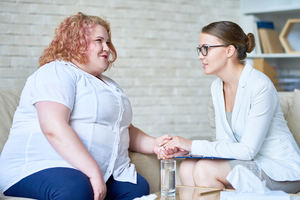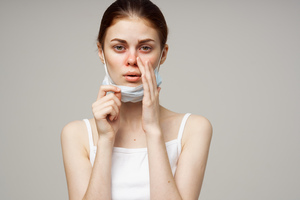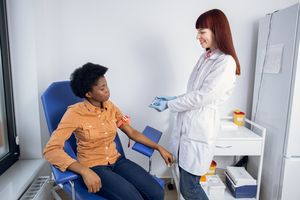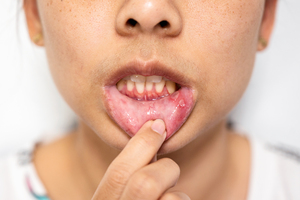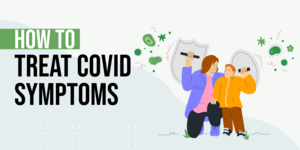Book an STD Test in Scottsdale, AZ
Own a clinic? Add your location.
Help patients book appointments with you on Solv. It's free!
19 instant-book locations

NextCare Urgent Care, Oak
NextCare Urgent Care

NextCare Urgent Care, Camelback
NextCare Urgent Care

Gateway Urgent Care, Val Vista
Gateway Urgent Care

Gateway Urgent Care, Gilbert
Gateway Urgent Care

Gateway Urgent Care, Higley
Gateway Urgent Care

Gateway Urgent Care , Queen Creek
Gateway Urgent Care

Labcorp
Labcorp
Self-pay pricing
Clear self-pay prices
No more surprise bills. Solv is committed to making getting healthcare as easy as buying groceries at the store, including knowing the price of care upfront.

Self-pay pricing
Clear self-pay prices
No more surprise bills. Solv is committed to making getting healthcare as easy as buying groceries at the store, including knowing the price of care upfront.

Self-pay pricing
Clear self-pay prices
No more surprise bills. Solv is committed to making getting healthcare as easy as buying groceries at the store, including knowing the price of care upfront.

Labcorp
Labcorp
Self-pay pricing
Clear self-pay prices
No more surprise bills. Solv is committed to making getting healthcare as easy as buying groceries at the store, including knowing the price of care upfront.

Alliance Urgent Care, Phoenix
Alliance Urgent Care

Labcorp
Labcorp
Self-pay pricing
Clear self-pay prices
No more surprise bills. Solv is committed to making getting healthcare as easy as buying groceries at the store, including knowing the price of care upfront.

Labcorp
Labcorp
Self-pay pricing
Clear self-pay prices
No more surprise bills. Solv is committed to making getting healthcare as easy as buying groceries at the store, including knowing the price of care upfront.

Labcorp
Labcorp
Self-pay pricing
Clear self-pay prices
No more surprise bills. Solv is committed to making getting healthcare as easy as buying groceries at the store, including knowing the price of care upfront.

Self-pay pricing
Clear self-pay prices
No more surprise bills. Solv is committed to making getting healthcare as easy as buying groceries at the store, including knowing the price of care upfront.

Self-pay pricing
Clear self-pay prices
No more surprise bills. Solv is committed to making getting healthcare as easy as buying groceries at the store, including knowing the price of care upfront.

Self-pay pricing
Clear self-pay prices
No more surprise bills. Solv is committed to making getting healthcare as easy as buying groceries at the store, including knowing the price of care upfront.

Labcorp
Labcorp
Self-pay pricing
Clear self-pay prices
No more surprise bills. Solv is committed to making getting healthcare as easy as buying groceries at the store, including knowing the price of care upfront.

Self-pay pricing
Clear self-pay prices
No more surprise bills. Solv is committed to making getting healthcare as easy as buying groceries at the store, including knowing the price of care upfront.

Labcorp
Labcorp
Self-pay pricing
Clear self-pay prices
No more surprise bills. Solv is committed to making getting healthcare as easy as buying groceries at the store, including knowing the price of care upfront.
Own a clinic? Add your location.
Help patients book appointments with you on Solv. It's free!
Overview of STD Testing in Scottsdale
Who should get tested for STDs?
Anyone who is sexually active should consider getting tested for STDs. This is particularly important for those who have multiple sexual partners, have had unprotected sex, or have symptoms that could indicate an STD. It's also crucial for pregnant women, as some STDs can cause complications during pregnancy or be passed on to the baby. According to the CDC, regular STD testing is a vital part of maintaining your sexual health.
Importance of getting tested
Getting tested for STDs is essential for several reasons. Firstly, many STDs do not show symptoms initially, meaning you could be infected and not know it. Secondly, untreated STDs can lead to serious health complications, such as infertility, cancer, and increased risk of HIV. Lastly, knowing your status can help prevent the spread of STDs to your sexual partners.
STD testing options in Scottsdale, AZ:
Urgent care and walk-in clinics
Urgent care and walk-in clinics, such as NextCare Urgent Care on N Scottsdale Rd, offer same-day and next-day STD testing appointments. These clinics are convenient and accessible, providing a quick and efficient way to get tested. You can book appointments at these clinics through Solv’s website and mobile app.
Primary care providers
Your primary care provider can also conduct STD testing. This option may be more comfortable for some, as it involves a healthcare provider you already have a relationship with.
Free STD testing and community health centers
There are also free STD testing options available in Scottsdale. Community health centers often offer these services to those who may not have insurance or the means to pay for testing.
At-home testing
At-home STD testing kits are another option. These kits can be ordered online and delivered to your home, where you can take the test and send it back for results. This option offers a high level of privacy and convenience.
Prevalence of STDs in Scottsdale
STD rates in Scottsdale, part of Maricopa County, have been on the rise in recent years, mirroring a national trend. According to the CDC, the most commonly reported STDs in the area are chlamydia, gonorrhea, and syphilis. Comparatively, Scottsdale has lower STD rates than nearby cities such as Phoenix and Mesa, but higher rates than Paradise Valley and Gilbert.
Risk factors related to STDs in Scottsdale
Several factors contribute to the prevalence of STDs in Scottsdale. These include a lack of regular testing, unprotected sex, multiple sexual partners, and a lack of education about STDs. Efforts to increase regular testing and education about STDs could help to reduce their prevalence in the area.
Solv has strict sourcing guidelines and relies on peer-reviewed studies, academic research institutions, and medical associations. We avoid using tertiary references.
STD Testing FAQs
Where should I get an STD test in Scottsdale?
In a doctor's office, a health clinic, or an urgent care center, you can get an STD test. If you're experiencing symptoms, it's best to visit a doctor's office, where they can also treat you or issue you a prescription. While some Scottsdale clinics and urgent care centers allow walk-in appointments, it's advisable to make an appointment ahead of time to prevent excessive waits.
How long does it take to get STD test results?
Various testing are required for various STDs. Depending on the type of STD test you took, you may receive your results in two to ten days. Some outcomes may be immediately available. Your doctor may be able to diagnose an STD through a physical examination. In some cases, your doctor's office may only contact you if your test results are positive.
How much does an STD test cost in Scottsdale?
The cost of STD testing is governed by several factors, including where you are tested, the type of test you need, and if you have health insurance. Some Scottsdale clinics may offer free testing or testing on a sliding scale based on your income. Because of the cost, don't put off obtaining an STD test. With your doctor's office, discuss the cost and payment choices. Delaying STD treatment may have catastrophic implications.
Does insurance cover STD testing in Scottsdale?
The cost of STD testing is governed by a number of factors, including the location of the test, the type of test required, and whether or not you have health insurance. Some clinics may provide free or sliding-scale testing, depending on your income. Don't let the expense of an STD test deter you from getting one. With your doctor's office, discuss the price and payment choices. Delaying STD treatment could have catastrophic ramifications.
How do they test for STDs in Scottsdale?
There are around 20 different forms of STDs, each with its own set of diagnostic tests. No single test exists that can detect all types of STDs. Your doctor can help you figure out which tests you'll need. In STD testing, a blood sample or a urine sample may be used. Your doctor may also take a swab from the inside of your cheek, your vaginal area, or another potentially infected place.
What STDs can be detected by a blood test?
Blood tests are used to diagnose hepatitis B, hepatitis C, herpes, HIV, and syphilis. In a laboratory, a technician examines a blood sample for antibodies that the body has produced in reaction to disease. The virus's DNA can also be detected by several blood tests. Remember that if you've recently been exposed to an STD and your body hasn't yet produced antibodies, you could test negative even if you have the disease.
Can I get a same-day appointment for STD testing in Scottsdale?
Many Scottsdale, AZ urgent care providers offer same-day and next-day appointments, which you may book through Solv. To make healthcare more accessible to everyone, we collaborate with thousands of top-rated local providers. Our physician partners understand that waiting days, if not weeks, for an appointment isn't always the best option, and they share our commitment to simple, accessible health care.
How can I book an STD test on Solv?
To find a healthcare practitioner in your area, simply enter your location and search for "STD test" on our website. A list of providers and available appointments can be found on the following page. Choose the most convenient time and location for you. Make it clear that you've come for STD testing.
How long does an STD test take in Scottsdale?
If you have a specific STD, inform your doctor so that the necessary test can be scheduled. Otherwise, they'll help you figure out which tests you'll need. The nurse or doctor simply needs a few minutes to get a blood sample, a urine sample, or a swab from the probable infection site.
Can I test myself for STDs at home?
Although there are several STD home tests available, not all of them are accurate. The accuracy of any STD test is determined by the quality of the sample taken. For home STD kits, a blood sample, a urine sample, or both are frequently required. Because doctors and nurses have more experience collecting samples, traditional in-office STD testing is the most accurate.
Related Searches
DOT Exam in Scottsdale
Ear Wax Removal in Scottsdale
Sports Physicals in Scottsdale
A1C Test in Scottsdale
Allergy Testing in Scottsdale
CMP Test in Scottsdale
Diabetes Test in Scottsdale
Diagnostic Test in Scottsdale
Glucose Test in Scottsdale
H Pylori Test in Scottsdale
Hepatitis test in Scottsdale
Lab Tests in Scottsdale
Mono Test in Scottsdale
Pregnancy Test in Scottsdale
Pulmonary Function Test in Scottsdale
RSV Test in Scottsdale
STD Testing in Scottsdale
Strep Test in Scottsdale
TB Test in Scottsdale
Thyroid Test in Scottsdale
Vitamin D Test in Scottsdale
Aetna Urgent Care
Blue Cross Blue Shield Urgent Care
Cigna Urgent Care
COVID-19
Flu
United Health Urgent Care
» All services in ScottsdaleFind STD testing
Nearby cities
Everyday Healthcare, Simplified
Expert advice to help you live your best life

